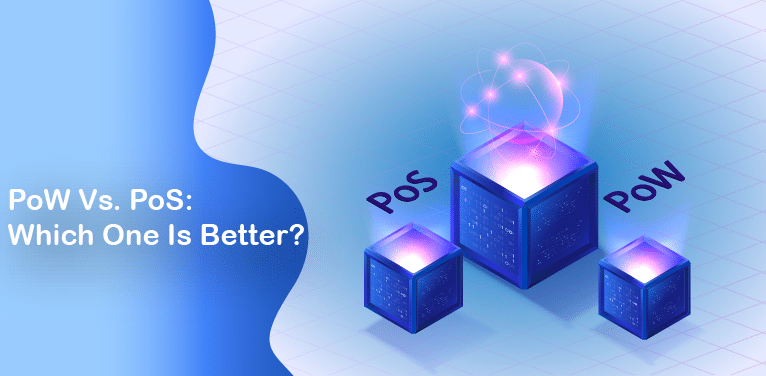Blockchain technology is a distributed ledger behind cryptocurrencies such as Bitcoin and Etherium. As it offers a decentralized environment, authorities are not required to validate a transaction. So, how does one validate a transaction between two strangers on a blockchain platform? Consensus mechanisms such as Proof of Work (PoW) and Proof of Stake (PoS) are used to confirm and regulate peer-to-peer value transactions.
PoW, short for Proof of Work, is the original consensus algorithm. Introduced by Hal Finney in 2004, it was first used by Bitcoin’s pseudonymous creator Satoshi Nakamoto. He used it to allow miners to confirm transactions on the Bitcoin network and create a new block on the blockchain ledger. And, in 2012, developers Scott Nadal and Sunny King came up with an alternative to Proof of Work. They called their consensus mechanism Proof of Stake, or PoS.
Since the introduction of Proof of Stake, there has been much discussion about PoW or PoS.
Let’s dive into this PoW vs. PoS debate and find out the differences between the two.
Working of PoW and PoS Protocols
The Proof of Work mechanism requires miners to crack complex mathematical puzzles to confirm transactions. After that, they include them in new blocks, which are later added to the blockchain. There are no puzzles to solve in the Proof of Stake mechanism. Miners can validate a transaction or mine based on how many coins they hold. Those who hold the maximum number of coins can verify a particular transaction.
Use of Energy
Nadal and King introduced Proof of Stake to solve the problem of high energy consumption in Bitcoin’s Power of Work. Users, or miners, use several specialized machines to compete against each other to solve complex mathematical puzzles to verify transactions and win block rewards (transaction fees or newly generated coins). And these machines guzzle a crazy amount of energy. According to a report, Bitcoin mining consumes around 91 terawatt-hours of electricity annually. As miners do not need computational power to verify transactions on the Ethereum blockchain, PoS uses less energy than PoW.
PoS vs PoW: Which One is Secure?
No PoS vs PoW debate can be complete without discussing which one is more secure. Proof of Work offers better security, as miners need to solve mathematical puzzles to verify transactions. Power of Stake is also seen as less risky because a malicious user needs a significant amount of coins to attack the network. But then that also makes the new consensus mechanism vulnerable to attack. Someone who can stake more can attack the network.
Rewards or No Rewards
PoW vs. PoS debate is pointless if there are no rewards for verifying transactions or adding new blocks to a blockchain. Power of Work rewards those who mine the block first. They get newly minted coins. The Power of Stake mechanism, on the other hand, offers no block rewards. Validators receive transaction fees.
PoW Vs PoS: Which Is Better?
Both PoW and PoS mechanisms have their advantages. And it is too early to declare a winner, as Power of Stake is still a new consensus protocol.
